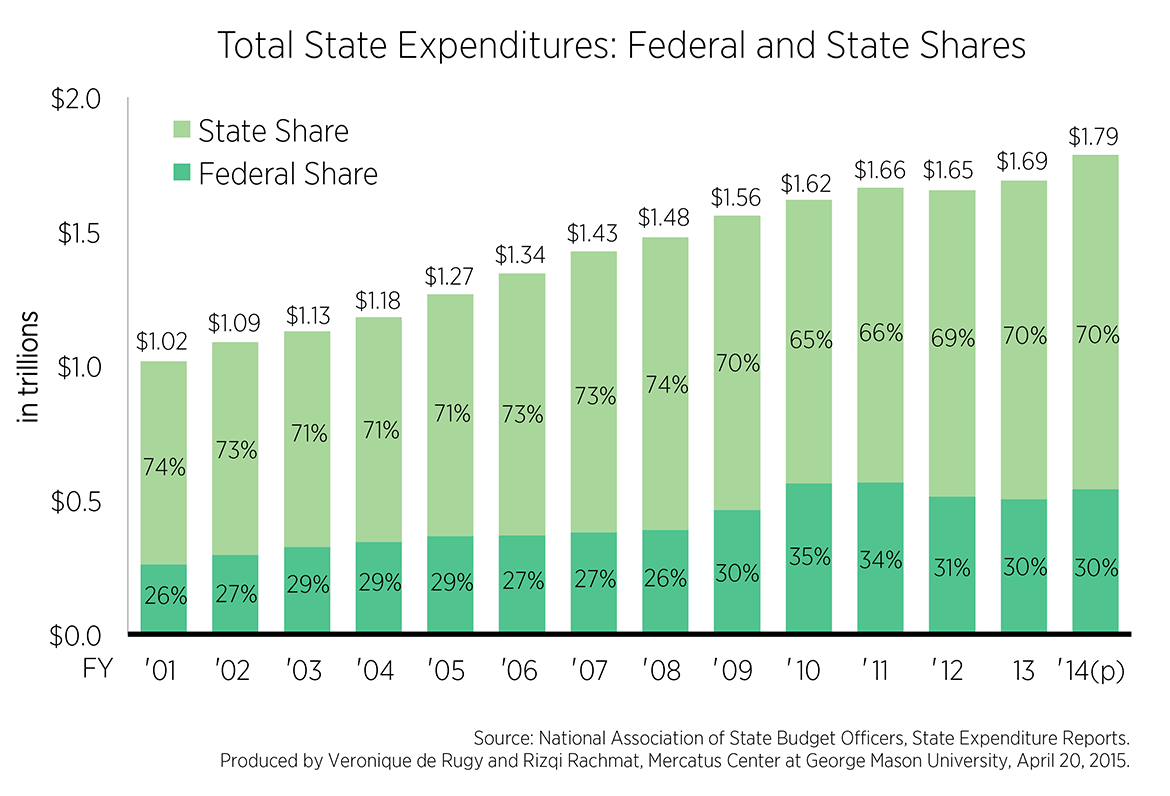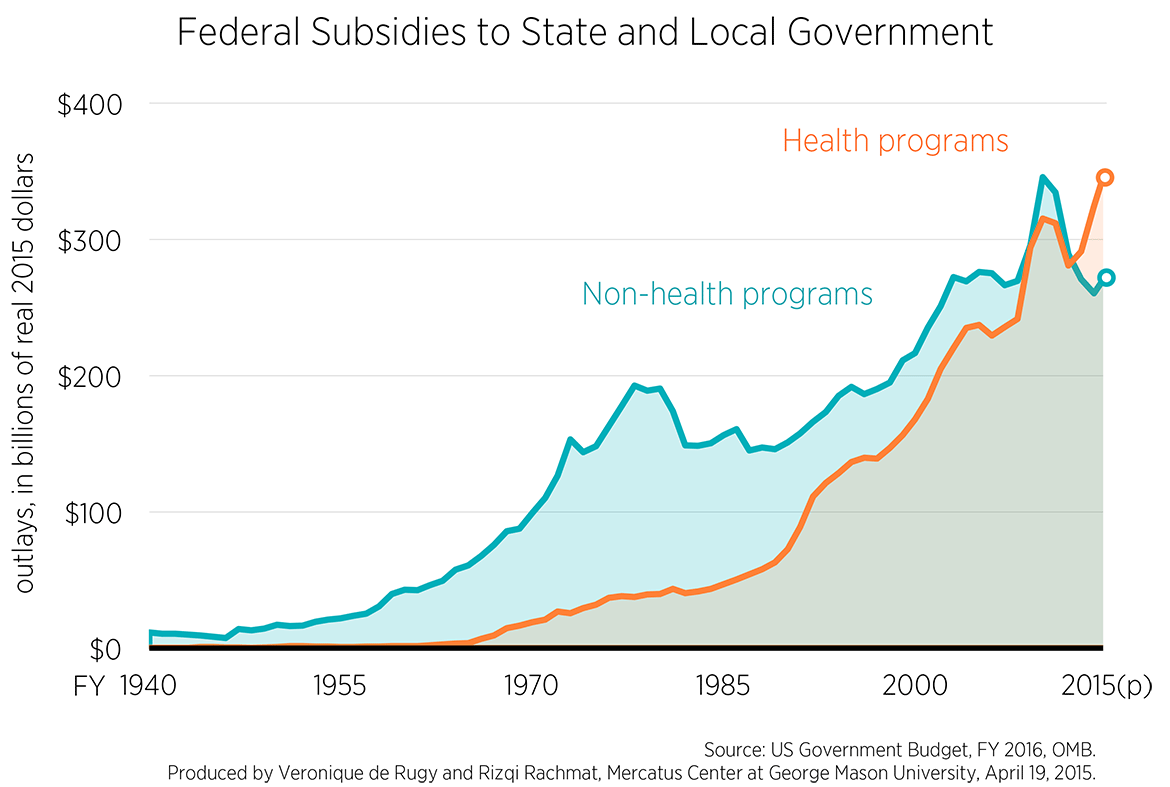- | Government Spending Government Spending
- | Data Visualizations Data Visualizations
- |
Federal Subsidies to the States Remain High
In spite of their complaints about federal overreach, state policymakers are addicted to handouts from Washington because it allows them to spend “free” money instead of asking their constituents to come up with funds via higher taxes. Unfortunately, federal money is not “free,” and the consequence of the federal government’s funding what are properly state and local responsibilities is excessive growth of government at all levels.

State governors and legislators often complain about the federal government’s heavy-handed presence in state and local affairs. Republican state policymakers have been particularly vocal in arguing that Washington should mind its own business and leave each state to its own devices.
While state policymakers don’t appreciate federal policymakers telling them what to do, they are highly dependent on federal tax dollars. As the first chart below shows, 30 percent of the total amount spent by state governments in fiscal year 2014 came from federal sources. That figure is down from the federal “stimulus” high of 35 percent in fiscal 2010, but remains above levels seen in the previous decade.
The federal government was originally given responsibility for a small, defined list of responsibilities that were national in scope (e.g., providing for the national defense) in the Constitution. The Tenth Amendment made it clear that everything else was supposed to be “reserved to the States respectively, or to the people.” But as the second chart illustrates, the notion that the federal government and the states would have divided spheres of responsibility (i.e., “federalism”) was eviscerated in the 20th century.
Separated into health and non-health subsidies, the chart shows the dramatic growth in federal subsidies to the states (adjusted for inflation) since 1940. Non-health subsidies have receded a bit in recent years following the conclusion of federal stimulus funding. However, health subsidies continue to reach new highs thanks in part to the expansion of Medicaid under Obamacare. As a whole, federal subsidies to the states will reach a combined $628 billion in fiscal 2015, which is more than the Department of Defense will likely spend this year.
In spite of their complaints about federal overreach, state policymakers are addicted to handouts from Washington because it allows them to spend “free” money instead of asking their constituents to come up with funds via higher taxes. Unfortunately, federal money is not “free,” and the consequence of the federal government’s funding what are properly state and local responsibilities is excessive growth of government at all levels.





